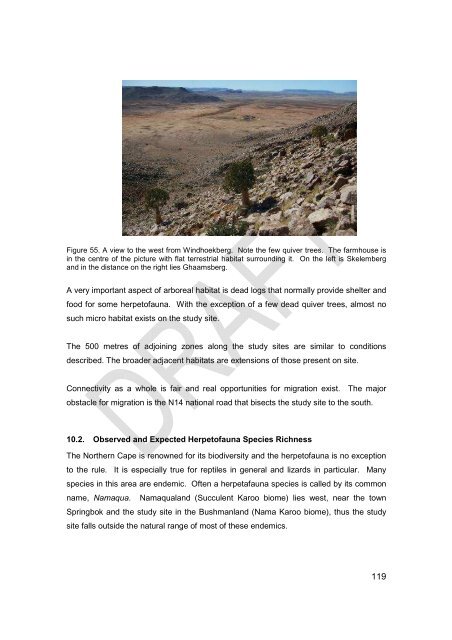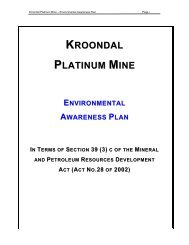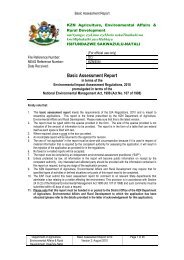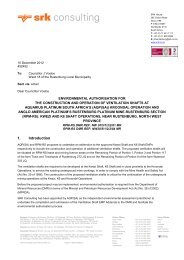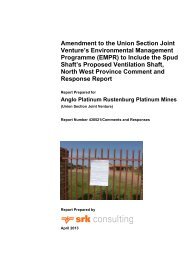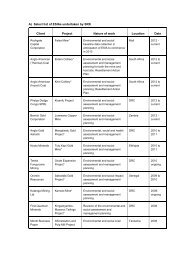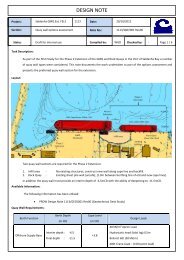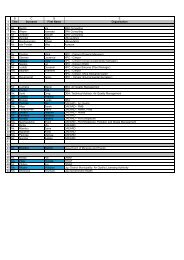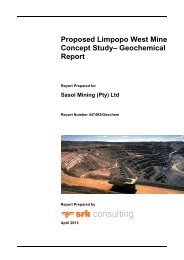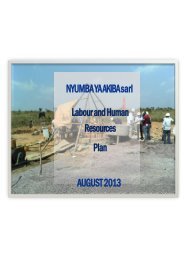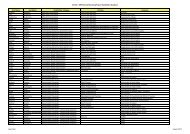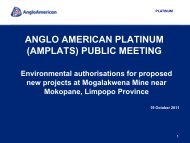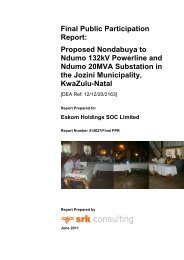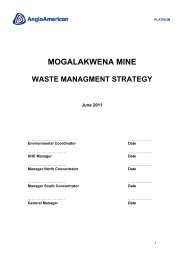Biodiversity (1 - SRK Consulting
Biodiversity (1 - SRK Consulting
Biodiversity (1 - SRK Consulting
You also want an ePaper? Increase the reach of your titles
YUMPU automatically turns print PDFs into web optimized ePapers that Google loves.
Figure 55. A view to the west from Windhoekberg. Note the few quiver trees. The farmhouse is<br />
in the centre of the picture with flat terrestrial habitat surrounding it. On the left is Skelemberg<br />
and in the distance on the right lies Ghaamsberg.<br />
A very important aspect of arboreal habitat is dead logs that normally provide shelter and<br />
food for some herpetofauna. With the exception of a few dead quiver trees, almost no<br />
such micro habitat exists on the study site.<br />
The 500 metres of adjoining zones along the study sites are similar to conditions<br />
described. The broader adjacent habitats are extensions of those present on site.<br />
Connectivity as a whole is fair and real opportunities for migration exist. The major<br />
obstacle for migration is the N14 national road that bisects the study site to the south.<br />
10.2. Observed and Expected Herpetofauna Species Richness<br />
The Northern Cape is renowned for its biodiversity and the herpetofauna is no exception<br />
to the rule. It is especially true for reptiles in general and lizards in particular. Many<br />
species in this area are endemic. Often a herpetafauna species is called by its common<br />
name, Namaqua. Namaqualand (Succulent Karoo biome) lies west, near the town<br />
Springbok and the study site in the Bushmanland (Nama Karoo biome), thus the study<br />
site falls outside the natural range of most of these endemics.<br />
119


